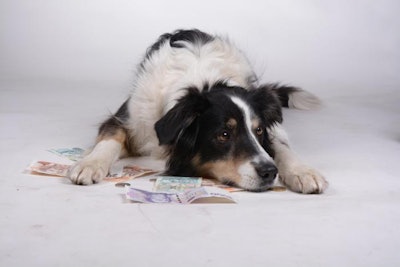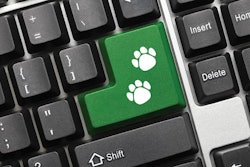
Pet food spending among U.S. consumers soared 18% in 2020, reaching US$36.84 billion, according to the U.S. Bureau of Labor Statistics (BLS) Consumer Expenditure Survey. That 18% increase (in dollars: US$5.65 billion) is the largest in the history of the survey, according to John Gibbons, the self-proclaimed Pet Business Professor, who analyzed the data on his blog. (Because the data comes from the government, it tends to take a while to be released.)
Pet food spending varied among demographic groups
Specifics on the pet food spending shared by Gibbons included that the average U.S. household spent US$230.38 on pet food in 2020, also an 18% increase. All income groups showed a spending increase except for those earning US$70,000-$99,999, interestingly, which spent US$3.75 billion (33.7%) less. Gibbons attributed the drop to the group’s price sensitivity as they first reacted to the Food and Drug Administration’s investigation into grain-free pet foods and canine dilated cardiomyopathy in 2018, resumed higher spending in 2019, then decreased their spending again in 2020 due to the pandemic. “They are middle income, with family responsibilities and under considerable monetary pressure,” he wrote.
The income group just below, US$30,000-69,999, increased their pet food spending only slightly at 0.3%, partially because of a drop in the number of households in that bracket, Gibbons said. The two other large income groups more than made up the difference, boosting their spending by 14% (those earning less than US$30,000) and 55% (the big earners at US$100,000 and more).
Similarly, pet food spending growth came from three age groups, particularly 55-to-64-year-olds, up a huge 94%. Older pet owners, 65 to 74 years old, also boosted their pet food spending, by 6.5%, as did millennials (25 to 34 years old), by 22.3%. Those increases offset lower spending by 45-to-55-year-olds (-23.1%), 35-to-44-year-olds (-12.2%), 75+-years-old (-1.1%) and gen Y, younger than 25 years old (-48.4%).
The number of households in each demographic group, and the percentages of pet owners those numbers represent, played a significant role in how much each group’s spending affected the overall picture.
Pet food sales up worldwide in 2020
The BLS data analyzed by Gibbons came from more than 42,000 consumer interviews and spending diaries collected by the U.S. Census Bureau and compiled by BLS. Thus, the data differs from retail sales data, which tend to track higher. For example, according to data reported by the American Pet Products Association earlier in 2021, U.S. pet food sales reached US$42 billion in 2020, a 9.7% rise over 2019.
That’s a very healthy increase, as with the BLS report on pet food spending. And the U.S. is not the only pet food market that experienced strong growth in 2020; others around the world registered gains, including developed markets that had seen only sluggish, or no, growth before then.
For example:
- In Germany, pet food sales increased 4.3% in brick-and-mortar outlets and 4.6% online in 2020 (WZF/ZZF);
- The Italian pet food market experienced similar growth, at 4.2% (ASSALCO);
- Similarly, the total Japanese pet care market grew 3.4% in 2020 (Tokyoesque, reported in Pets International).
Developing markets, though smaller, enjoyed robust growth in 2020:
- Ukrainian pet food sales soared 24% in 2020, according to pet food producer Kormotech (Pets International);
- Similarly, the total pet care market in Hungary rose 17% (Pe-Zo Ltd., Pets International);
- Though China’s pet market growth slowed in 2020, bright spots included a 24% rise in the retail unit price of pet food (Kaiyuan securities report).
Like many other industries now, pet food continues to face COVID-induced headwinds like supply chain disruptions and labor shortages, yet it seems to be riding a mostly positive wave out of 2021 and looking ahead to 2022.

















